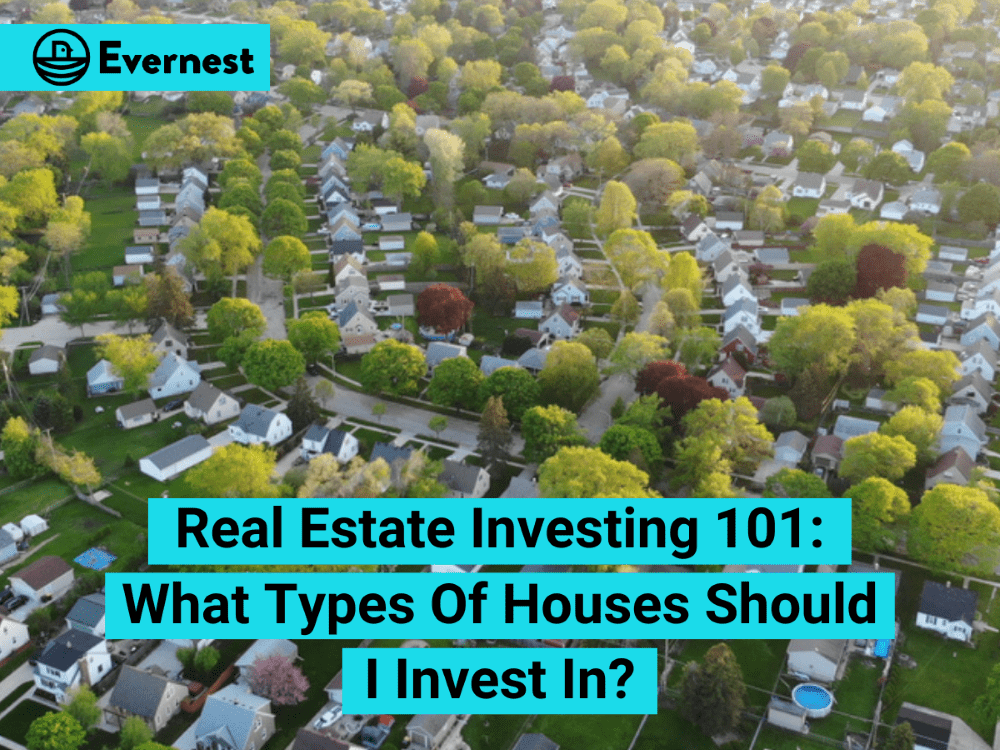One question that new investors often ask is what type of house they should invest in. It’s an essential question, and frankly, there’s no one answer that is right for everyone. After all, each investor has their own goals, ideals, and budget to work with – especially ones looking for a rental property. Some investors might find specific pros more attractive than others, or that certain cons are non-negotiable. So, how can we answer this question? What types of houses are the best to invest in? In this post, we’re going to cover the pros and cons of houses based on the time period of when they were built. A property’s construction date is where the most noticeable and relatively consistent differences are. For example, during the early 20th century, modern amenities were not available like they are today, which directly affected the construction choices. Similarly, the exterior styles, renovation eligibility, and more vary based on a property’s age. Depending on the type of investor you are, you might find that one time period offers you the opportunities that work the best for your portfolio. So, let’s dive in!
Homes Built Between 1920-1940
Homes constructed in the early 20th century are often in lower-income yet highly established neighborhoods. Since they didn’t have access to modern machinery at the time, these are houses that were built primarily in flat areas. Especially in the south, they typically have high ceiling lines and high rooflines. This was because there was no air conditioning during the time they were constructed. Something for investors to consider is that those high ceilings may cause issues with heating and cooling due to the bigger space. The positive side is that the architecture is oftentimes unique, with styles such as craftsman and art-deco. These styles can be charming for residents. For investors looking to renovate a space, homes in this age group can provide a great opportunity. Additionally, these renovations may be required due to compliance codes. They may or may not have been retrofitted with things like heating and air conditioning. Some modern plumbing and modern electrical could have been added, but sometimes they haven’t been. You can expect repair and maintenance numbers on these homes will be higher, which is something investors will need to account for. However, these homes are typically smaller in terms of square footage. So, that may make up for some of the extra additional costs of repairs and maintenance.
Properties Constructed Between 1950-1960
The next round of houses are those built in the ’50s and ’60s. With homes built in this era, you get more modern systems and efficient floor plans. Typically, they have larger sized closets, better sized bedrooms, and the ceilings aren’t as high. Around this time, there were more modern amenities available, so you’ll likely have a design that accommodated central heating and air conditioning. These houses often used brick, wood, and concrete, and have very sturdy construction. However, similarly to the previous generation, there may be electrical and plumbing systems that are outdated and/or not up to today’s code compliance laws. As long as you account for these maintenance items in your budget for repairs, it doesn’t have to stop you from investing in one of these properties. It’s simply a concern to be mindful and prepared for. Oftentimes these homes are renovated/have had work done over the years. This can be a pro or a con depending on the quality of work done and whether or not you want to renovate it yourself. Another pro is that since these homes were constructed over half a century ago, they’re typically in established neighborhoods and can be close to grocery stores, schools, parks, and so on.
Houses Built after 1980
When asking what types of houses to invest in, the final age gap between 20th century homes and the brand-new builds we see today are the more modern houses built after the ’80s. Floor plans become more open during this time period, so these homes often have a more spacious feel to them. They also tend to have bigger bedrooms and closets. A noteworthy pro of these homes is that they’re built with more modern electrical systems, so they may not need any updates. However, it’s still important to cross-reference with today’s codes. Additionally, there was more awareness surrounding energy efficiency, those features are often included in 1980s properties. However, since these houses are aging, they still may be in need of repairs. Depending on the condition of the properties, these costs will likely be lower than for older homes. Many of these homes can typically be located in nicer areas and in the suburbs, so it can be more difficult to cash flow houses that were built during these years. At the end of the day, depending on where you buy, you need to just make sure these homes bring in more than they cost.
Brand New Properties
Finally, we have new properties. These builds typically have the latest energy efficient technology and comply with modem, local regulations and codes. Repair and maintenance numbers are typically very low. In fact, investors can expect those numbers to stay low for about the first 10 years, whereas when you renovate a house, the first two years are the honeymoon period. After that 10-year benchmark, systems such as air conditioning and heating will start to break down. But those expenses can be planned and accounted for in your investment strategy. Newer homes tend to be more attractive to renters. The modern features, amenities, and overall appeal are all eye-catching to potential residents. Also, renters may want the low-maintenance aspect as well. For investors who are looking to acquire a rental property, these are points to consider.
Final Thoughts
There are many aspects to consider when deciding what types of houses to invest in. Each time period has its own unique set of pros and cons. Depending on whether or not you’re looking to rehab a property, if you want something low-maintenance, or choose a class C or D property versus an A or B, the type of property that’s best to invest in will vary. At the end of the day, what makes a good investment is whether or not it cash flows. Understanding the neighborhood you’re buying into, knowing how to evaluate a property, and choosing a property that fits within your budget, are important places to start. That’s why it can be helpful to have a team with boots-on-the-ground experience on your side. Brokers and property managers can provide deeper insights into both the property itself and the surrounding areas. If you’d like more resources, you can join the Evernest Community for free, where you’ll get access to educational tutorials, exclusive market listings, a network of fellow investors, and a place to get feedback from long-time pros. Join the Evernest Community here!


